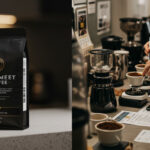
Introduction to the Third Wave of Coffee
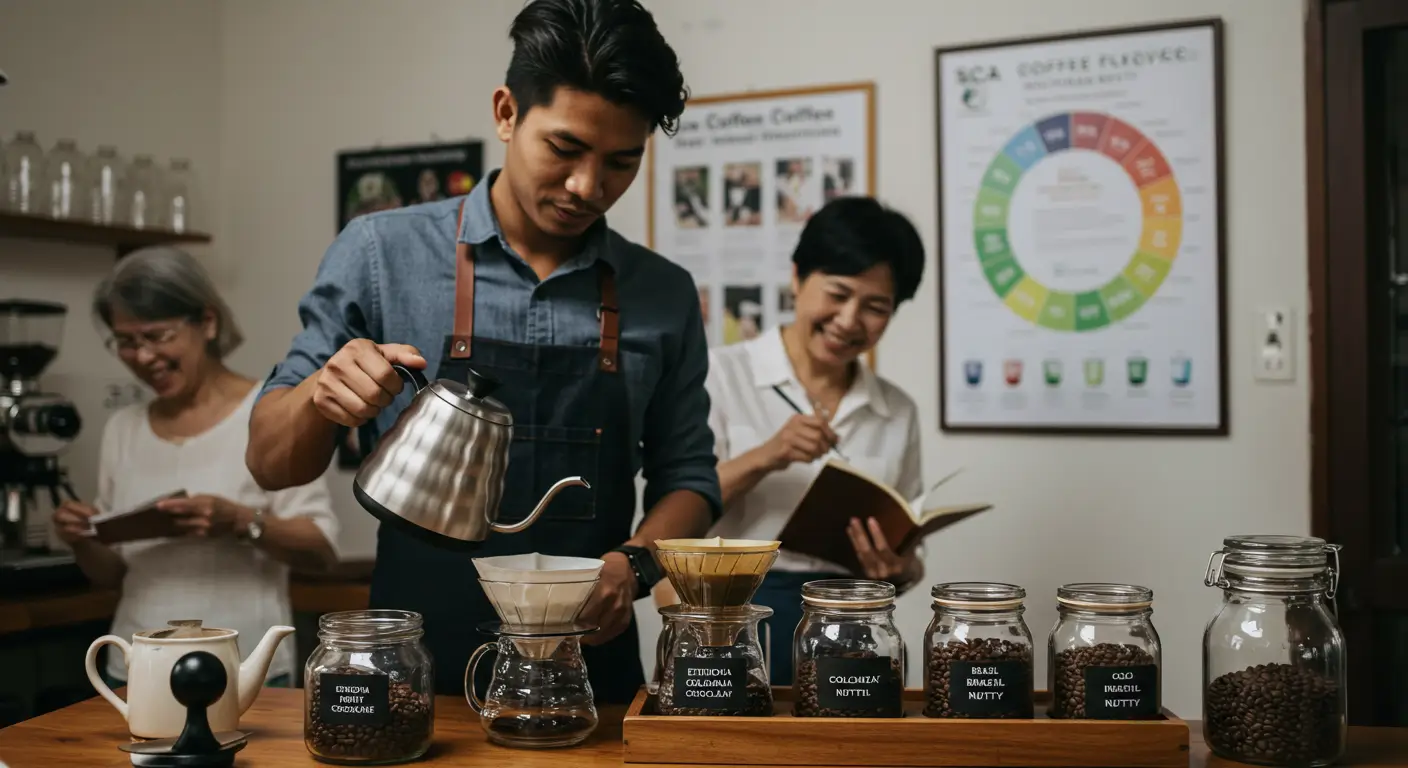
Table of Contents
ToggleDefining the Third Wave Movement
The Third Wave of Coffee is a movement that emphasizes coffee as an artisanal product rather than just a commodity. It focuses on quality, sustainability, and traceability, treating coffee with the same reverence as fine wine or craft beer. This wave celebrates the unique flavors of coffee beans, highlighting their origin, processing methods, and roasting techniques.
A Brief History
The term “Third Wave” was coined by Trish Rothgeb in 2002, but its roots trace back to the late 20th century. The movement emerged as a response to the mass-produced, commercialized coffee of the Second Wave, led by chains like Starbucks. Instead, it draws inspiration from the First Wave, where coffee became a household staple, and builds upon it with a focus on craftsmanship and education.
Key Influences
Several key factors shaped the Third Wave movement:
- Specialty Coffee Association (SCA): Established standards for quality, fostering a global appreciation for specialty coffee.
- Direct Trade: Encouraged relationships between farmers and roasters, ensuring fair compensation and better beans.
- Innovative Brewing Methods: Techniques like pour-over, AeroPress, and cold brew allowed coffee lovers to explore nuanced flavors.
- Education: Baristas and coffee enthusiasts began sharing knowledge, elevating the coffee experience for consumers.
The Shift in Coffee Culture
Focus on Quality Over Quantity
The third wave of coffee has ushered in a transformative shift in how we perceive and consume coffee. Gone are the days when a quick, generic cup of joe was enough to satisfy the masses. Today, coffee lovers are seeking quality over quantity, prioritizing flavor, complexity, and craftsmanship. This movement has redefined coffee from a mere caffeine delivery system to an artisanal experience.
Specialty coffee emphasizes meticulous sourcing, precise roasting, and expert brewing techniques. It’s about celebrating the unique characteristics of each bean, whether it’s the bright acidity of a Kenyan pour-over or the chocolatey richness of a Colombian espresso. This focus on quality has inspired a growing community of home baristas and coffee enthusiasts to invest in premium equipment and refine their brewing skills.
Emphasis on Traceability and Origin
Another hallmark of the third wave is the growing emphasis on traceability and origin. Coffee is no longer just a commodity; it’s a story. Consumers now want to know where their beans come from, who grew them, and how they were processed. This demand for transparency has led to a deeper connection between farmers and coffee drinkers.
Traceability ensures that coffee is sourced ethically and sustainably, supporting farmers who prioritize quality and environmental stewardship. By understanding the origin of their beans, coffee lovers can appreciate the terroir—the unique environmental factors that influence flavor—whether it’s the altitude of a Guatemalan farm or the volcanic soil of a Sumatran plantation.
This shift has also encouraged roasters and cafes to highlight single-origin coffees, showcasing the distinct profiles of beans from specific regions. It’s a journey of discovery, where every cup tells a story of its roots.
The Role of Specialty Coffee
What Makes Specialty Coffee Unique?
Specialty coffee stands apart from regular coffee due to its uncompromising quality and meticulous production process. Unlike commercial coffee, which often prioritizes volume over flavor, specialty coffee is crafted with precision and care. It starts with high-quality Arabica beans, which are grown at optimal altitudes and harvested by hand to ensure only the ripest cherries are selected. These beans are then carefully roasted to highlight their unique flavor profiles, ranging from floral and fruity to nutty and chocolatey.
Another defining characteristic is its transparency. Specialty coffee often comes with detailed information about its origin, including the farm, region, and farmer. This traceability allows coffee lovers to connect deeply with the story behind their brew. Additionally, specialty coffee is typically scored by certified professionals using the Specialty Coffee Association (SCA) scale, where a score of 80 or above is required to be classified as specialty grade. This rigorous evaluation ensures that every cup delivers an exceptional experience.
The Importance of Sustainable and Ethical Sourcing
Specialty coffee is not just about taste—it’s also about making a positive impact. Sustainable and ethical sourcing practices are at the heart of the specialty coffee movement. Many specialty coffee roasters and producers prioritize:
- Fair Trade Certification: Ensures farmers receive fair compensation for their hard work.
- Organic Farming: Reduces the use of harmful chemicals, promoting healthier ecosystems.
- Direct Trade: Builds relationships between roasters and farmers, cutting out middlemen and ensuring better prices for growers.
By choosing specialty coffee, consumers contribute to the livelihoods of farmers and their communities. Sustainable practices also help protect the environment by preserving biodiversity and reducing waste. For example, shade-grown coffee promotes forest conservation, while water-efficient processing methods minimize the environmental footprint. In essence, specialty coffee is a sustainable and ethical choice that benefits both people and the planet.
The Impact on the Market
Growth of Independent Coffee Shops
The third wave of coffee has fueled the rise of independent coffee shops, transforming local neighborhoods into hubs of specialty coffee culture. Unlike large chains, these shops focus on quality, sourcing, and craftsmanship, offering patrons a personalized experience. Many independent cafés partner directly with farmers, ensuring transparency and sustainability in every cup. This shift has not only redefined consumer expectations but also created a thriving ecosystem for small businesses. For coffee lovers, it means access to unique, carefully curated brews that tell a story.
Rise of Home Brewing and Premium Equipment
As the third wave movement gained momentum, it inspired a new generation of home baristas eager to replicate café-quality coffee at home. This demand has led to a surge in the availability of premium brewing equipment, from precision grinders to pour-over kettles and high-end espresso machines. Brands like Chemex, Hario, and Breville have become household names, empowering coffee enthusiasts to experiment with techniques like cold brew, AeroPress, and siphon brewing. Additionally, the rise of online communities and tutorials has made it easier than ever to master the art of brewing. Investing in quality equipment is now seen as a natural step for those who truly appreciate the nuances of specialty coffee.
A Market Driven by Passion
The third wave has not just changed how we drink coffee; it has reshaped the entire market. Specialty coffee is no longer a niche—it’s a lifestyle. Consumers are willing to pay a premium for ethical sourcing, exceptional taste, and innovative brewing methods. This has encouraged even traditional coffee brands to adapt, introducing higher-quality offerings to stay competitive. At its core, this movement is driven by passion, both from producers and consumers, creating a dynamic and ever-evolving coffee culture.
Brewing Techniques and Innovation
Popular Third-Wave Brewing Methods
The third wave of coffee introduced a variety of brewing methods that emphasize precision, flavor, and craftsmanship. These methods allow coffee lovers to extract the most nuanced flavors from their beans. Here are some of the most popular techniques:
- Pour-Over: This method involves manually pouring hot water over coffee grounds in a filter. It’s celebrated for its ability to highlight bright, complex flavors. Devices like the Hario V60 and Chemex are staples in the pour-over world.
- AeroPress: A versatile and portable brewing tool, the AeroPress combines immersion and pressure to create a smooth, rich cup of coffee. Its adaptability makes it a favorite for both beginners and experts.
- Cold Brew: Unlike traditional brewing, cold brew involves steeping coffee grounds in cold water for 12-24 hours. This results in a low-acidity, naturally sweet beverage that’s perfect for hot summer days.
- French Press: Known for its simplicity, the French Press extracts coffee by steeping grounds in hot water and then pressing them down with a plunger. It produces a full-bodied, robust cup.
The Science Behind Perfect Extraction
At the heart of every great cup of coffee is extraction—the process of dissolving coffee compounds into water. Achieving the right balance is key to unlocking the flavors locked within the beans. Here’s what you need to know:
- Grind Size: The grind size directly impacts extraction. A fine grind is ideal for espresso, while a coarse grind works best for French Press. Pour-over methods typically require a medium-fine grind.
- Water Temperature: The ideal brewing temperature ranges between 195°F and 205°F. Too hot, and you risk over-extraction; too cold, and the coffee might taste underdeveloped.
- Brew Time: Different methods require different brew times. For example, an AeroPress might take 1-2 minutes, while a pour-over can take up to 4 minutes. Timing ensures balanced extraction.
- Water-to-Coffee Ratio: A general rule of thumb is a 1:15 to 1:17 ratio of coffee to water. Adjusting this ratio can help you fine-tune the strength and flavor of your brew.
Innovation in Brewing Technology
The third wave of coffee has also driven advancements in brewing technology, making it easier than ever to achieve cafe-quality results at home. Here are some notable innovations:
- Precision Kettles: Gooseneck kettles with temperature control allow for precise pouring, which is essential for methods like pour-over.
- Smart Scales: Coffee scales with built-in timers and weight measurements help ensure consistency in every brew.
- Advanced Grinders: Burr grinders, especially those with adjustable settings, provide uniform grind sizes, which are crucial for consistent extraction.
The Consumer Evolution
Educated Coffee Drinkers and Their Preferences
Today’s coffee drinkers are more informed than ever before. Thanks to the third wave of coffee, consumers are no longer satisfied with just a caffeine fix. Quality, transparency, and sustainability have become the cornerstones of their coffee choices. Educated coffee enthusiasts prioritize understanding the origin of their beans, the roasting process, and the brewing method. They seek out single-origin coffees, which offer unique flavor profiles tied to specific regions, and they value roasters who provide detailed information about the farmers and cooperatives involved.
Preferences have also shifted toward lighter roasts, which highlight the inherent characteristics of the coffee bean rather than masking them with a smoky or burnt flavor. Additionally, there’s a growing interest in alternative brewing methods, such as pour-over, AeroPress, and cold brew, which allow for greater control over the extraction process and a more personalized experience.
- Single-origin coffees are favored for their traceability and distinct flavors.
- Lighter roasts are preferred to showcase the bean’s natural notes.
- Alternative brewing methods are gaining popularity for their precision and creativity.
The Social and Cultural Significance of Coffee Today
Coffee has transcended its role as a mere beverage and has become a cultural phenomenon. It’s a symbol of connection, creativity, and community. Specialty coffee shops have evolved into social hubs where people gather to work, chat, or simply enjoy a moment of mindfulness. These spaces often double as platforms for local art, music, and activism, fostering a sense of belonging and shared purpose.
Moreover, coffee has become a medium for storytelling. From the farmer who cultivates the beans to the barista who crafts the drink, every cup carries a narrative of passion, dedication, and craftsmanship. Consumers are increasingly drawn to this narrative, making coffee an integral part of their identity and lifestyle.
“Coffee is not just a drink; it’s an experience, a conversation, and a way to connect with the world.”
The rise of coffee culture has also sparked a growing appreciation for coffee as an art form. Latte art, for instance, has become a visual expression of skill and creativity, captivating both baristas and customers alike. This cultural shift has elevated coffee from a daily ritual to a meaningful and enriching experience.
The Future of the Third Wave
The Third Wave of coffee has already transformed the way we perceive, brew, and enjoy coffee. But what lies ahead? Emerging trends, driven by technology and sustainability, are shaping the next evolution of this movement, ensuring that coffee lovers continue to experience innovation and excellence in every sip. Let’s explore how this wave is moving forward and what it means for you.
Technology: Brewing Smarter, Not Harder
Technology is playing a pivotal role in the future of specialty coffee. From smart coffee makers that allow precision brewing to apps that help you track your bean’s origin and roast profile, the integration of tech is making it easier than ever to craft the perfect cup. Here’s what’s trending:
- Smart grinders and espresso machines: Devices that sync with your smartphone to customize grind size, water temperature, and brew time.
- Blockchain traceability: Transparent tracking of coffee beans from farm to cup, ensuring ethical sourcing and quality control.
- AI and machine learning: Algorithms that analyze brewing data to help you perfect your recipe.
Sustainability: A Greener Cup
Sustainability is no longer a buzzword—it’s a necessity. The Third Wave’s future is deeply rooted in eco-conscious practices that protect both the environment and the livelihoods of coffee farmers. Key developments include:
- Regenerative agriculture: Farming methods that restore soil health and biodiversity, promoting long-term sustainability.
- Zero-waste packaging: Compostable or reusable bags, as well as initiatives to reduce plastic use.
- Carbon-neutral roasteries: Roasters offsetting their carbon footprint through renewable energy and reforestation projects.
The Rise of Coffee Education
As the Third Wave evolves, so does the desire to learn. Coffee education is becoming more accessible, empowering enthusiasts to deepen their knowledge and skills. From online courses to in-house barista training programs, the emphasis on education ensures that the art of coffee continues to thrive.
“The more you know about coffee, the more you’ll appreciate the craft behind every cup.” – A seasoned barista
FAQs About the Future of the Third Wave
Will the Third Wave make coffee more expensive? While specialty coffee often comes at a premium, the focus on sustainability and ethical sourcing ensures that your investment supports both quality and fair practices. How can I stay updated on emerging trends? Follow specialty coffee blogs, attend coffee festivals, and engage with local roasters to stay in the loop. Is technology replacing the art of brewing? Not at all! Technology complements the craft, offering tools to enhance precision and creativity.
As we look ahead, it’s clear that the Third Wave is far from its peak. With technology and sustainability leading the charge, the future promises even more exciting possibilities for coffee lovers. Whether you’re a seasoned barista or a curious beginner, there’s never been a better time to explore the ever-evolving world of specialty coffee.
is an editor at Coffee With Finance and a true coffee enthusiast. He explores roasts, flavors, origins, and brewing methods, sharing stories that captivate both beginners and experts. Petter believes great coffee sparks meaningful moments—and that includes simple, jargon-free talks about personal finance. His content blends aroma, flavor, and insight, making each coffee break an inspiring and enriching experience.


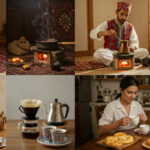












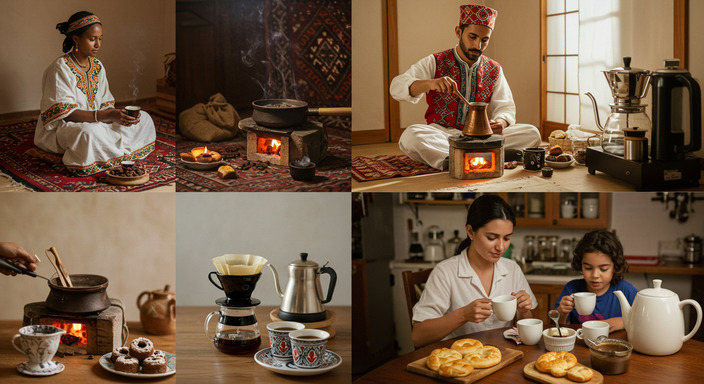


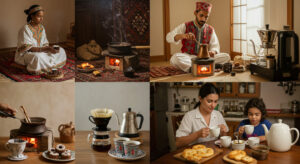









Post Comment